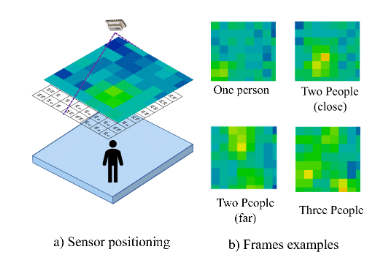
STMicroelectronics Italy, IMEC and POLITO have collaborated within the StorAIge project to publish their results on
« Efficient Deep Learning Models for Privacy-preserving People Counting on Low-resolution Infrared Arrays »
Chen Xie et al., IEEE Internet of Things Journal (vol. 10, no. 15, pp. 13895-13907, 1 Aug.1, 2023 – 10.1109/JIOT.2023.3263290).
Abstract:
Ultralow-resolution infrared (IR) array sensors offer a low cost, energy efficient, and privacy-preserving solution for people counting, with applications, such as occupancy monitoring and visitor flow analysis in private and public spaces. Previous work has shown that deep learning (DL) can yield superior performance on this task. However, the literature was missing an extensive comparative analysis of various efficient DL architectures for IR array-based people counting, that considers not only their accuracy but also the cost of deploying them on memory- and energy-constrained Internet of Things (IoT) edge nodes. Such analysis is key for system designers, since it helps them select the most appropriate DL model given the constraints of their target hardware. In this work, we address this need by comparing six different DL architectures on a novel data set composed of IR images collected from a commercial $8\times8$ array, which we made openly available. With a wide architectural exploration of each model type, we obtain a rich set of Pareto-optimal solutions, spanning cross-validated balanced accuracy scores in the 55.70%–82.70% range. When deployed on a commercial microcontroller (MCU) by STMicroelectronics, the STM32L4A6ZG, these models occupy 0.41–9.28kB of memory, and require 1.10–7.74 ms per inference, while consuming 17.18– $120.43 \mu \text{J}$ of energy. Our models are significantly more accurate than a previous deterministic method (up to +39.9%), while being up to $3.53\times $ faster and more energy efficient. So, our work serves also as a demonstration that DL can not only achieve higher accuracy but also higher efficiency compared to classic algorithms for this type of task. Further, our models’ accuracy is comparable to state-of-the-art DL solutions on similar resolution sensors, despite a much lower complexity. All our models enable continuous, real-time inference on an MCU-based IoT node, with years of autonomous operation without battery recharging.



